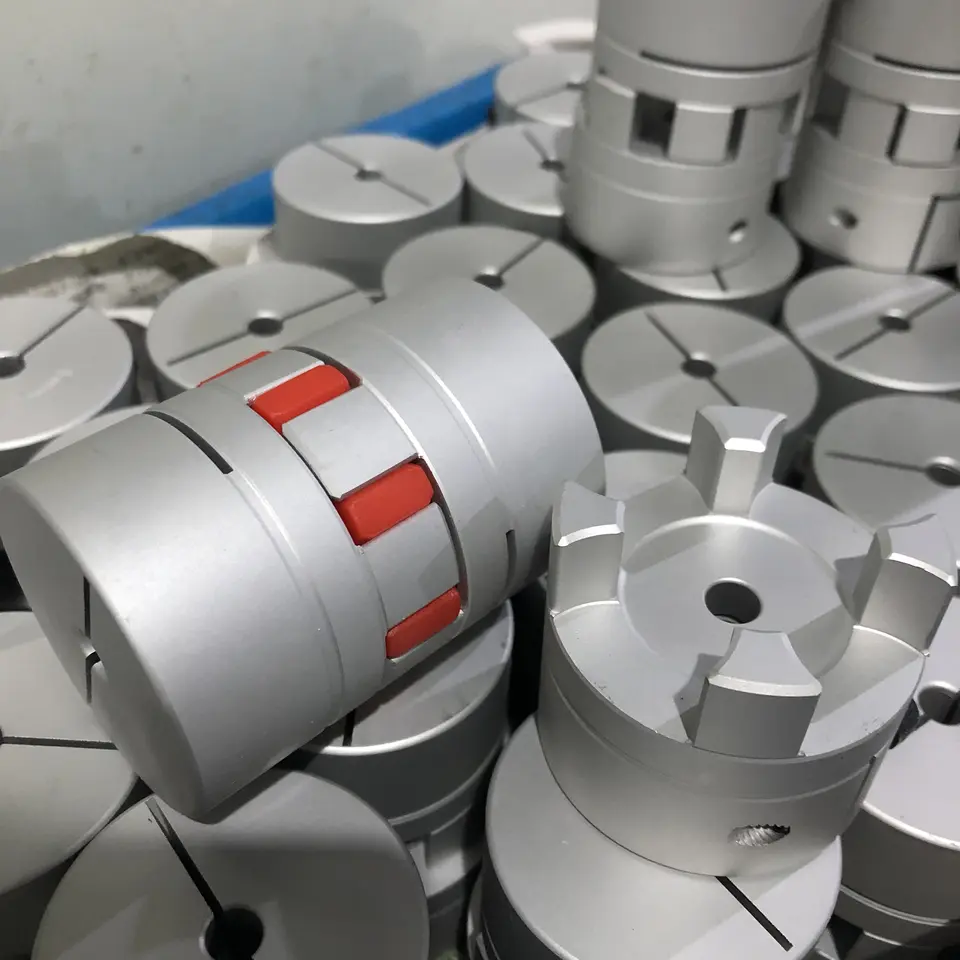Product Description
Product Description
The Curved Jaw couplings can be utilized in many applications and serve as an all-purpose coupling. The basic design of the Curved Jaw allows for a higher torque capacity in a compact design. The curved tooth has a greater contact area which gives it the high torque capacity, and reduces edge pressure. It will accommodate axial, radial and angular shaft misalignments. The hubs are produced from a variety of materials including; aluminum, gray iron, steel, sintered steel, and stainless steel. The spider elements are available in various durometer options in Urethane & Hytrel. The spiders can perform under normal duty cycle conditions to heavy duty cycles which include shock loading and can minimize torsional vibrations in the system.
Features of Curved Jaw Coupling/Rotex Coupling:
1.High efficiency zero backlash Curved Jaw Coupling/Rotex Coupling.
2.Rigid and flexible at the same time, different kinds of spiders of different hardness.
3.Light weight and compact design.
4.Can bear high speed and torque power transmission.
Techncial Date
| KASIN No. | Hub Type | Max Speed RPM | Rated Torque/Nm | Pilot Bore | Finished Bore | L | L1; L2 | E | b | s | D1 | dH | D; D2 | N | G | t | |
| 98 Sh-A/Red | 92 Sh-A/Yellow | d | Min~Max | ||||||||||||||
| 19 | 1 | 167/8822 0571 -57152031 Fax: 86~/8822 0571 -57152030
Torque and Speed Ratings for Different Sizes of Jaw CouplingsThe torque and speed ratings for jaw couplings vary depending on their size and design. Manufacturers typically provide specifications for different sizes of jaw couplings, and it’s essential to select the appropriate coupling based on the specific requirements of the application. Here’s how torque and speed ratings are determined for jaw couplings:
It’s essential to carefully match the torque and speed requirements of the application with the appropriate jaw coupling size. Undersized couplings may result in premature failure, while oversized couplings might lead to reduced flexibility and increased wear. Manufacturers’ catalogs or product datasheets provide detailed information on the torque and speed ratings for each coupling size, helping engineers and designers make informed decisions when selecting the right coupling for their specific needs. What are the cost implications of using jaw couplings compared to other coupling types?When considering the cost implications of using jaw couplings compared to other coupling types, several factors come into play. Jaw couplings offer certain advantages and disadvantages in terms of initial cost, maintenance, and overall performance. Here’s a breakdown of the cost considerations:
In summary, jaw couplings generally offer a cost advantage in terms of their lower initial cost and relatively low maintenance requirements. However, the most cost-effective choice depends on the specific application and its performance demands. It is essential to evaluate factors such as torque requirements, misalignment compensation, maintenance needs, and operating conditions to determine the best coupling type that balances performance and cost-effectiveness. Maintenance Requirements for Jaw CouplingsJaw couplings are relatively low-maintenance components, but regular inspections and preventive measures can help ensure their optimal performance and longevity. Here are the maintenance requirements for jaw couplings:
Following these maintenance practices can extend the life of the jaw coupling, reduce the risk of unexpected failures, and contribute to the overall reliability of the mechanical system.
| |||||||||||||||




